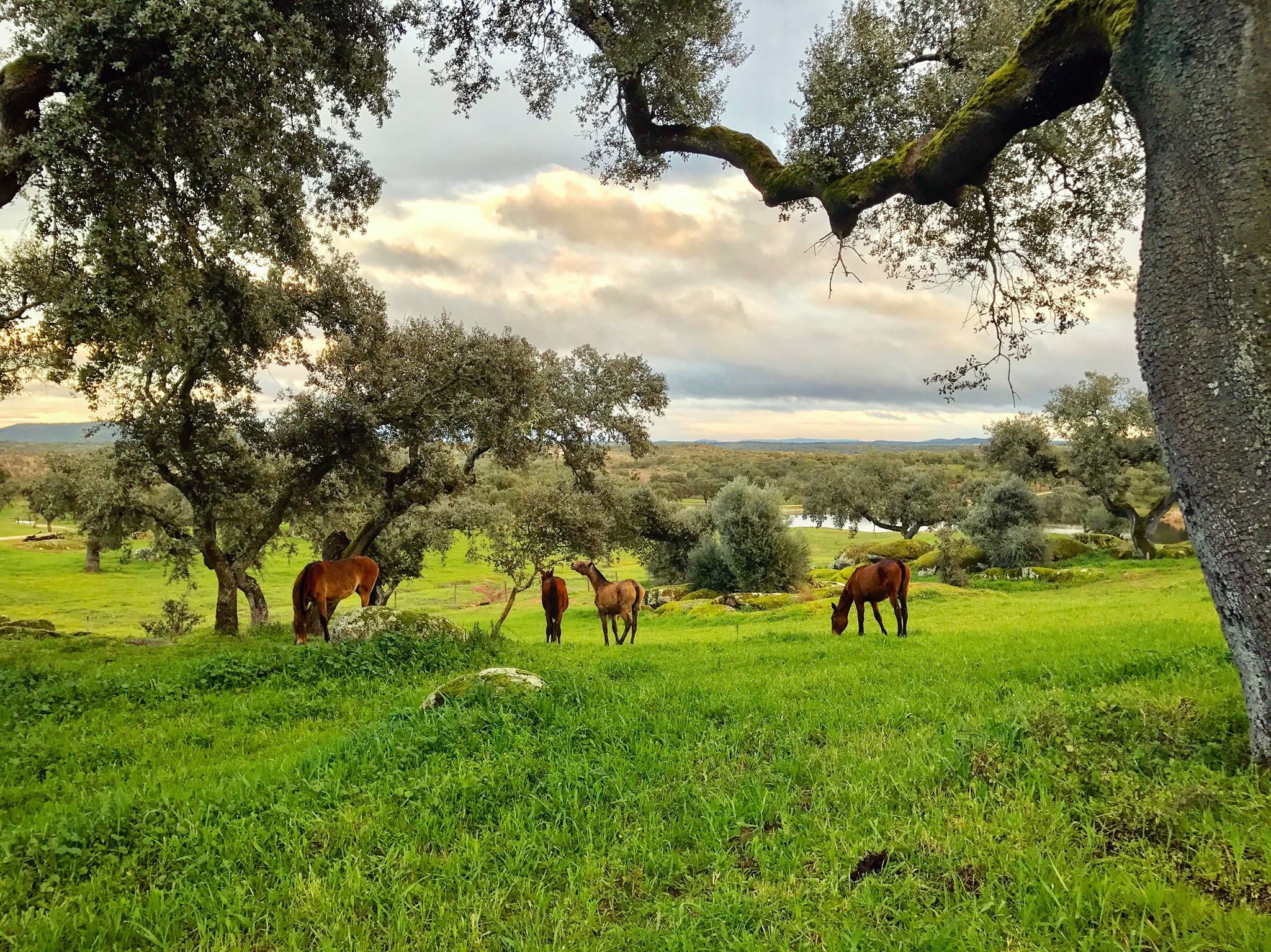
Driving east from Lisbon, Portugal, across the Tagus River, you discover that cities become towns, highways become two-lane roads and, as you get closer to the Monte Velho Equo-Resort in the Alentejo region, the roads finally turn to dirt washboards. The lush climate dries and the trees become small and scrubby. The small towns are surrounded by vast farmlands, fields dotted with a confetti of sheep, vineyards and cork trees. When you arrive at the stud farm, you walk up a cobbled driveway and enter through a white-washed arch, under which an iridescent peacock picks at the ground among a rainbow of flowers.
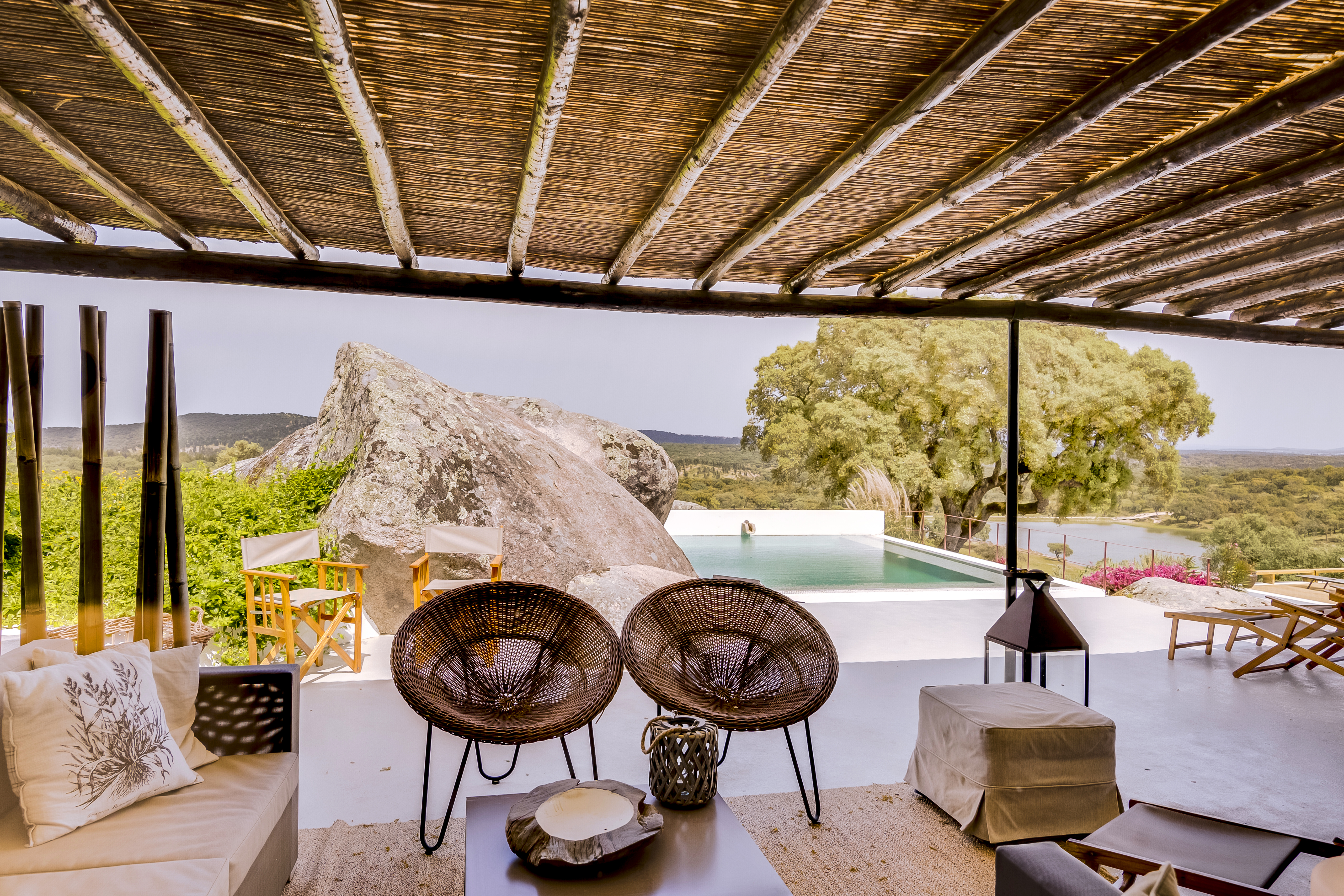

The barn and hotel are a collection of white-washed structures built into the hills. The bottom 2 feet of each wall is bordered in stunning indigo that matches the blue of the sky on a spring day. It is impossible to tell how roomy the buildings are because they appear nestled into the surroundings. There are rooms for the guests as well as a restaurant and the home of the Lima Mayor family. There is even a chapel. Fountains trickle and flowers bloom in a variety of colors. Several barns are full of beautiful Lusitano horses. Arenas—a small indoor, a full-sized outdoor and a covered arena—all blend neatly into the stunning setting. I arrived on a bright November day for a visit. I wasn’t sure the equestrian-vacation idea was right for me, a professional dressage trainer, but I figured I could at least relax and enjoy the scenery. I was in for a big surprise!
Diogo Lima Mayer Sr. is the owner of Monte Velho, which means “Old Home,” and is an international architect. In 1989, at just 37 years old, he suffered a heart attack. His doctor could find nothing wrong with him outside the stress of his job, so he prescribed what only the best doctors can: that Diogo Sr. get a hobby. An equestrian himself, the good doctor suggested he try riding. With that decision, Diogo and his family’s lives were changed forever.
Diogo Sr. learned dressage from Pedro Yglesias, a student of well-known dressage Master Nuno Oliveira, and he purchased his first Lusitano, Embaixador, as a 3-year-old in 1992. He met supportive people, had excellent guidance and enjoyed the horses so much that he decided to begin breeding Portugal’s traditional breed in 1992. As the idea grew, the family realized they needed more land to fulfill their goals. In 1994, they went to look at the property in the Alentejo region and they immediately fell in love. The pure and wild nature of the area is protected by the government, so the spirit of the land will remain forever. The ground is not good for growing, but in addition to horses, they raise cattle, sheep, goats and black pigs. The farm’s cork trees are also harvested for champagne bottles because the dimension of the Monte Velho trees fits the requirements of the champagne producers perfectly. The cork harvest is done every 9 years—the last one was in 2013 and harvested around 75 tons.
The Monte Velho breeding operation, which started small, remains that way with just five broodmares. The Lusitano stud book is closed to outside blood, so each breeding is thoughtfully chosen. Lusitano horses were originally bred for working with cattle, bullfighting and populating the Portuguese cavalry. Now the horses are also bred for top-quality dressage. The horses have a natural ability to collect, and with careful crosses, the Lusitanos are becoming bigger and sportier with each generation. Each mare at Monte Velho is bred to a different stallion with the goal of producing an international-quality dressage horse.
In 2013, the Lima Mayor family had the idea to add an ecotourism aspect to the farm. The goal was to help the business be economically sustainable for the future so their breeding, training and showing goals could be reached. The addition of the hotel turned into a great way to share their love for the Lusitano breed with guests from all over the globe.
The hotel has become a Lima Mayer family affair. Diogo Lima Mayer Jr. runs the operation and his brother Francisco is the CFO. Margarita, Diogo Sr.’s wife, oversees meals and decorating the living spaces. The family feel is tangible for the guests. Everything from the rooms to the food to the gardens is thoughtfully and tastefully done.
The Start of My Journey
I arrived at Monte Velho with my boots on and ready to ride. The outdoor arena is positioned with a backdrop of olive and oak trees. In the distance, I could see the 2-year-old foals frolicking in the pasture. The autumn sun made the warmer colors of the earth glow shades of pink and orange. In the background, I heard the faint ringing of the bells worn by the cattle and sheep.
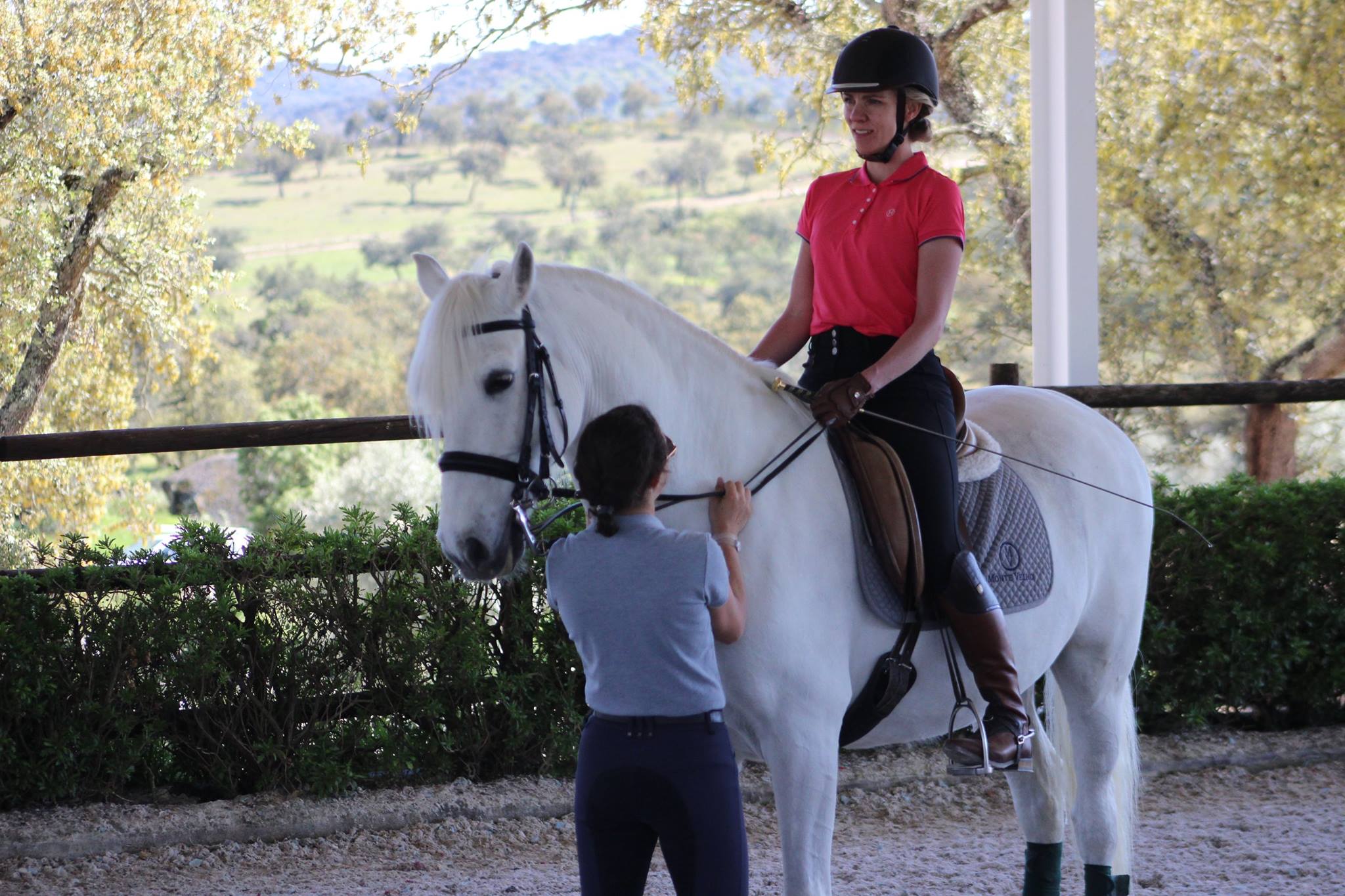
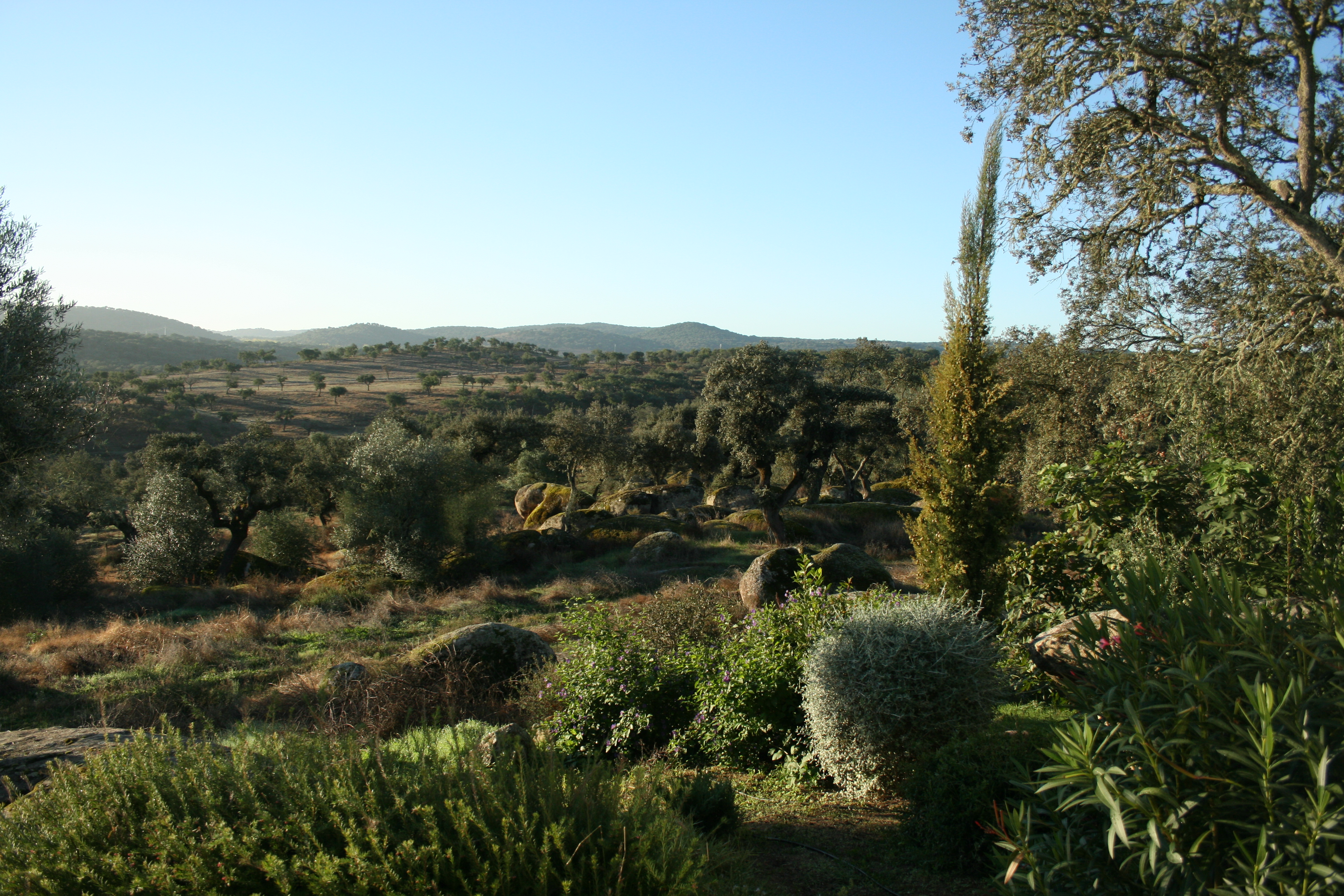
I was allotted two rides per day with one of the three instructors. There are about 15 horses in the hotel program, from young horses in training to several schoolmasters. Many of the horses are trained through Grand Prix and several more through Prix St. Georges. Like all horses, these Lusitanos each have different strengths and weaknesses. However, one common thread among the horses is that they have exceptional personalities. Each is ridden by many different people in a year and yet all are so bright-eyed and so generous when they come to the arena. They truly offer you a special experience.
The job of the instructor is to guess, without knowing the rider, which horse to use to help that rider get the most out of the lesson as possible. How do they do this? The instructors know the horses well and know how to help riders of all ability levels find the right feeling on each particular horse. The horses are trained but they are not push-button. A rider can get a lot out of each one by riding correctly.
I was impressed by the passion the instructors put into each lesson. The head trainer, Coralie Baldrey, told me that for each rider she sets a goal during the first ride that she would like to see accomplished during the rider’s stay. She wants every student to take some knowledge home with him or her. Therefore, each lesson thoughtfully builds on the last and focuses toward the rider’s goals and improving his or her understanding for the future.
I was lucky to ride three of the Grand Prix horses. With every ride, I got to know each horse a little better. The instruction I received left me with some great advice and correct feelings to come home with.
The instructors were sticklers about my riding position. They stressed that the rider keep the upper body tall and the hips open so the seat could be deep and the rider’s weight could stay back over the horse’s haunches. To position the hands, Coralie says, “carry your hands so they don’t fall too low and rest on the neck, usually bringing the upper body forward with them.”
I learned that in the warm-up, I had to be more focused on the horse’s balance. I was used to riding horses who needed to be warmed up deep or stretching, but if I lowered the thick, cresty neck of the Lusitano I was riding, the balance was compromised because too much of the horse’s weight shifted onto the forehand. The instructors wanted me to keep the neck more horizontal and then stretch the horse under and behind the saddle by lifting his back. Keeping the horse in balance is much easier than fixing a horse out of balance, so the lesson was quickly learned. We did suppling exercises at the walk and trot, such as large circles, changes of direction and leg-yield. Then, we worked on the trot–canter transitions. The transitions loosened up the horse’s back, but also had the benefit of helping me get better feel for the horse. Was he accepting my seat when I sat the trot? Was he accepting my aids for the transition? Was he accepting my straightening aids before, during and after the transition? After this warm-up was working well, I knew I had the horse ready for collected work.
In the canter, my lessons were again about developing the connection. My instructors had me work on changing the length of stride. I had to be very careful as the strides got longer that the balance didn’t shift onto the forehand. As I brought the horse back into a more collected canter, I needed a lot of feel in my seat and use of the leg to keep the better rhythm from the lengthened gait and not allow the horse to become ground-bound and choppy. The transitions suppled each horse and developed the connection that allowed us to perform the more collected movements, such as the half-passes, pirouettes and changes.
In the trot, I got the wonderful feeling of collection. The warm-up trot is rhythmic but small, and when you put the horse into a position for collection, suddenly he is 6 inches taller and you feel this arch of energy carrying you through his back. The legs are articulating and sometimes you see the front hooves in front of his shoulder out of the corner of your eye.
In the piaffe and passage, each instructor and each horse had something special to teach about the timing, placement and intensity of the aids that helped me understand the movements much better and in a way I could use in the future. The instructors helped me find the exact placement for the legs in the piaffe, which was a little back; in the passage, which was a little forward; and then for the transition, when the legs keep the rhythm and shift between the positions. I learned that my hip angle must remain open during the movements. If the hip angle closes, the energy is blocked through the back and then the horse cannot maintain rhythm and throughness. The upper body remains vertical and must be coming forward with the horse as opposed to being left behind. I enjoyed riding so much that I could hardly stop smiling.
The Guests
I noticed some patterns among the other guests at the hotel. Some came as pairs with a friend, daughter or significant other. Most were serial horse vacationers, and had been to many different places. One couple had been to Monte Velho several times. Most rode dressage primarily, but not all. Many riders came to learn more about riding as well as to relax and enjoy the scenery. Often, participants would sit and watch the other lessons when they were not riding, encouraging the other riders and taking photos. The ringside conversation would vary, but was usually equine-related. Overall, the environment was a dream built for horse lovers.
The meals were all served in the restaurant that overlooks the ring and the paddocks. The food was traditional, fresh and delicious. My favorites were the fresh olives and Portuguese cheeses served with lunch and dinner. They also served red, white and rosé wines from a winery down the road. During the meals, guests from all over the world would come together to talk about their universal love for horses. The bonds that were created during the time spent together certainly produced some serious friendships!
Other Activities
What do the guests do besides dressage lessons? You can jump in the swimming pool, hike, bike or paddle a canoe and just reflect. Book a massage or even a winery tour at a nearby vineyard. Monte Velho just added a spa and hot tub for the guests this year.
Explore the breathtaking landscape from the back of a horse for a special treat. Well-trained geldings are used for trail rides, where riders can walk, trot and canter together as a group. Riding through the pond is especially refreshing in the summer—the horses like to stop there and drink. The fragrant flowers and impossibly picturesque scenery give the trail ride a magical feel. You can imagine the Romans riding through the same untouched scenery hundreds of years before.
If you choose to explore the surrounding area, you can spend time in Évora, a nearby university town with an active central square. If you walk up the hill, past the knick-knack tourist shops, you find yourself face to face with a cathedral, a palace and the ruins of the Roman Diana Temple. The view from the top of the cathedral shows the red-tiled roofs of the town clustered before the stretches of fields, beautiful olive trees growing in neat rows and small vineyards situated within the rolling hills of the region.
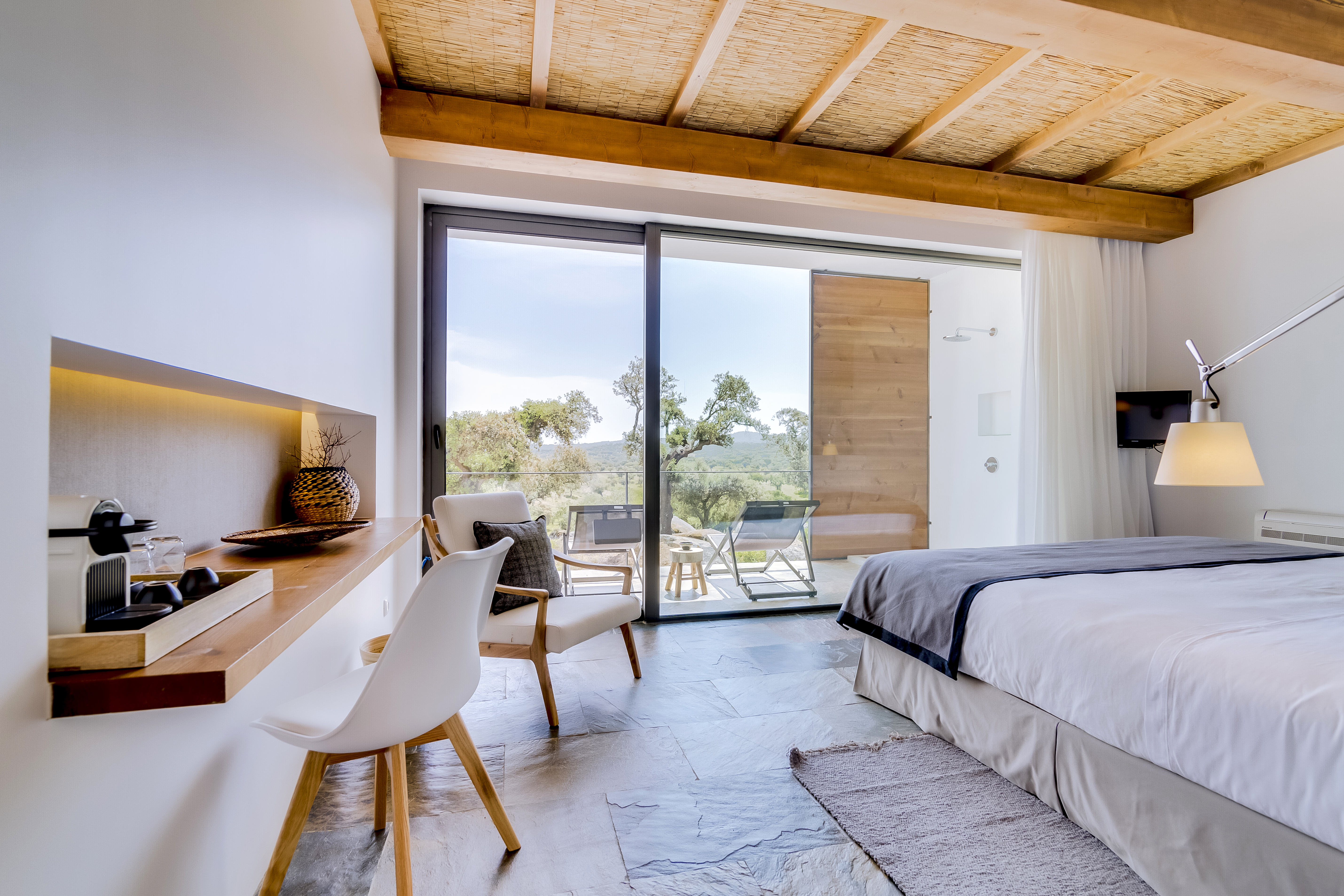

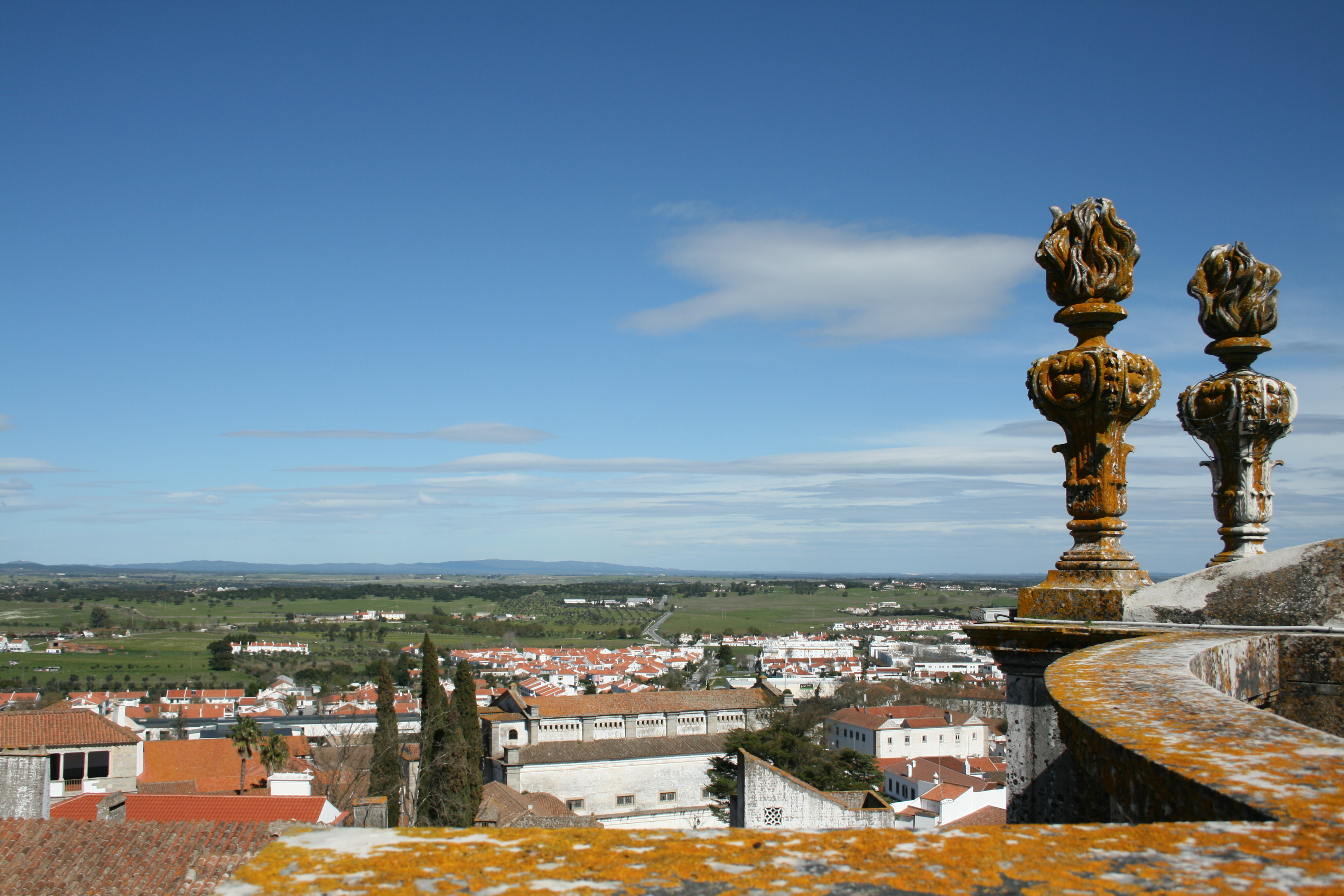
The Lusitano Horses
Monte Velho prides itself on being a working breeding farm with a hotel, not a hotel that happens to be on a breeding farm. The breeding and training operation runs year-round. In the spring and summer, the mares foal out in the field. The horses are weaned, started and trained by the same trainers who also teach the lessons in an open environment, where the hotel guests can observe. The horses that they breed are started, trained and eventually shown locally and internationally. Some are sold while others become schoolmasters for the hotel.
The current pride of the farm is the beautiful Equador MVL. Started on the farm and ridden by the trainer João Torrão, he is currently 8 years old and schooling the Grand Prix movements. I was fascinated to watch João and Equador work together because the horse epitomized many of the traits that make the Lusitano such a special breed.
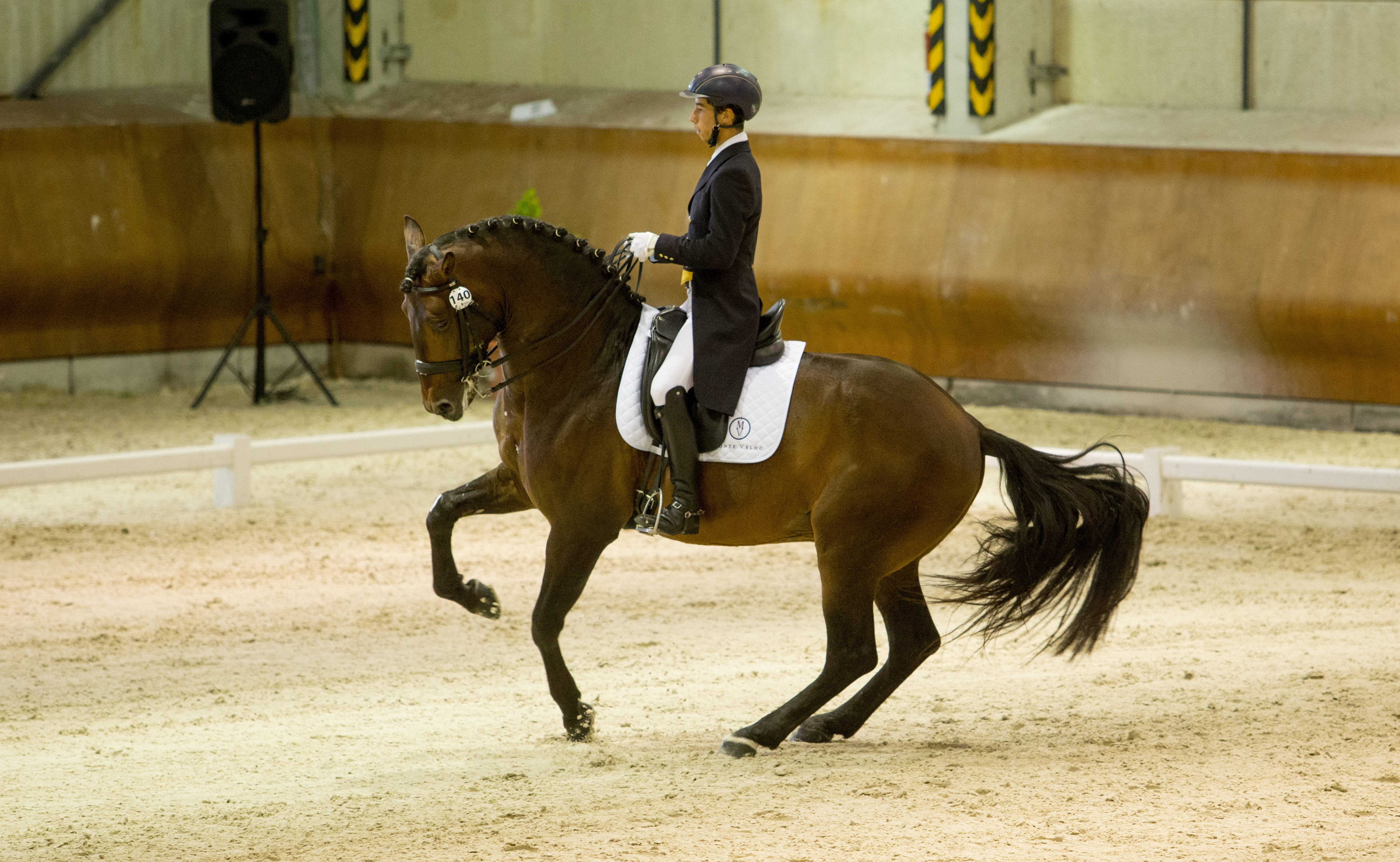
Lusitanos often have the classical, convex profile and a large, arching neck. They are the living versions of the paintings of the horses you find in the classical European section of museums. The horses have a certain intelligence about them that you can see in their eye and in the way they interact with people. They act as if they know their job and they want to work. When the rider challenges the horse to do something better, the horse accepts and gives his full effort. The result is often a beautiful partnership that is a pleasure to observe.
Monte Velho made a deep impression on me. In fact, I returned to the United States and I missed everything I had found so lovely in Portugal: the people, the horses, the food and the weather. I was wondering how one could know about how wonderful Portugal was and yet still choose to leave. I wanted to come back and I did! I am now an instructor and trainer at Monte Velho. I train the horses they breed, the schoolmasters for the hotel and I teach lessons. If you decide to come and visit, I’ll see you here!
For more information about Monte Velho, visit montevelho.pt. To book a trip from the United States, contact Active Travel Riding Trips (activeridingtrips.com).
Annie Morris is a contributor to Dressage Today as well as a USDF Certified Instructor through FEI Level, a member of the Instructor Certification Faculty and a USDF gold medalist. She is a trainer and instructor at Monte Velho Equo-Resort in Santana do Campo, Portugal.











